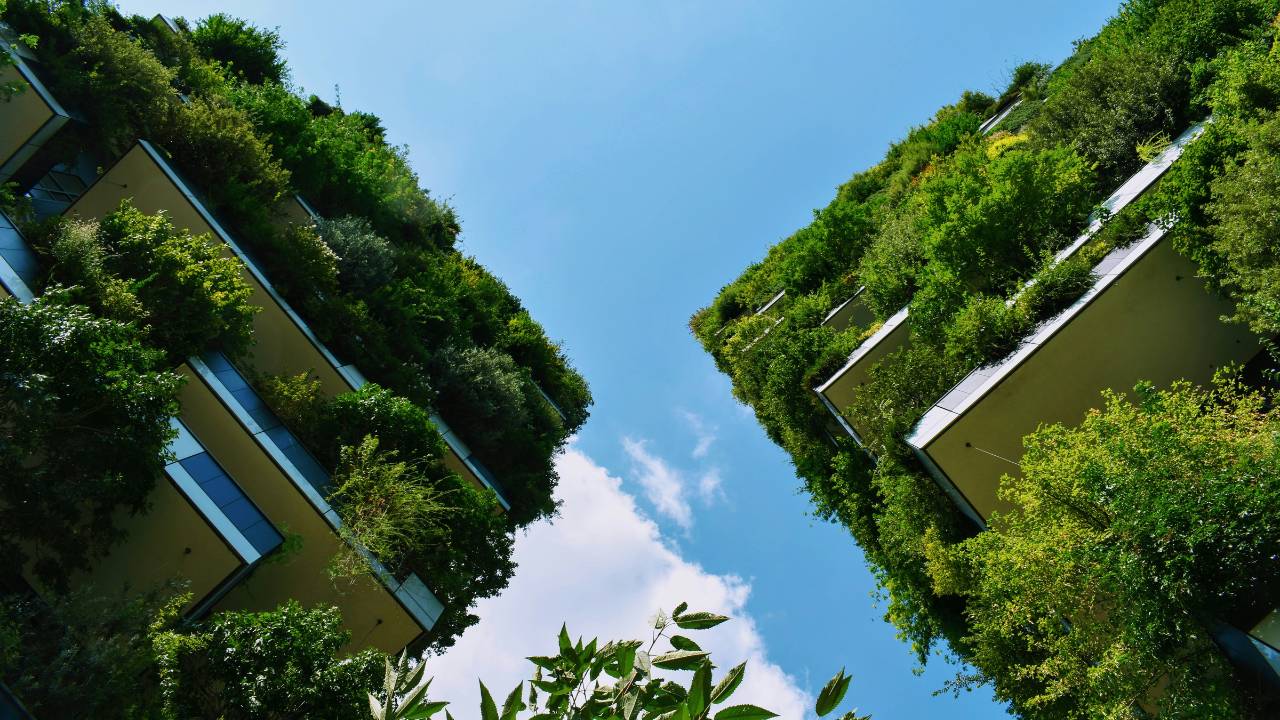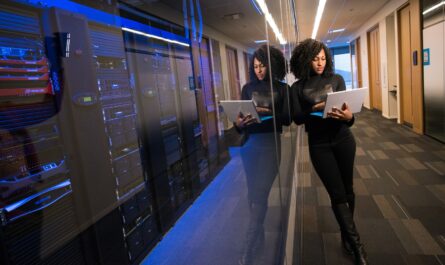In the pursuit of efficiency and technological advancement, the role of aesthetics in the business environment can sometimes be overlooked. Yet, integrating elements of nature into your workspace has proven benefits, ranging from boosting creativity to enhancing well-being. The incorporation of natural elegance within an office doesn’t just elevate the mood, but it also fosters a sense of calm that can lead to increased productivity.
Your business environment is a reflection of your company’s brand and values. As technology continues to evolve, so does the potential for creating a workspace that strikes a balance between functionality and aesthetic appeal. By harnessing innovative design and smart technology, you can create a space that not only looks good but also works seamlessly to support your business activities.
Imagine walking into a workspace where the air feels fresh, the lighting is soothing, and there’s a living wall of greenery greeting you. Such settings are no longer just a figment of the imagination. Advances in green technology and sustainable practices are making it possible for you to bring the outdoors in, without compromising on the high-tech necessities that keep your business running smoothly. This marriage of nature with cutting-edge technology is changing the face of corporate environments, positioning your business at the forefront of modern and responsible design.
Strategic Integration of Natural Elements
The strategic integration of natural elements into your business environment can enhance sustainability and comply with evolving environmental regulations. Your approach can create an engaging and responsible corporate presence that aligns with the targets of the European Green Deal and the global 2030 climate goals.
Incorporating Sustainable Practices
As you pioneer sustainability within your company, it’s crucial to adopt practices that reduce greenhouse gas emissions and support your journey towards net zero. A robust sustainability framework helps ensure compliance with government legislation and leads to informed decisions that benefit the environment. Consider sourcing materials like natural stone from suppliers like Midland Stone, who offer products that do not deplete resources, ensuring a lower carbon footprint. Integrating plants into office spaces not only adds aesthetic value but also purifies the air and improves employee well-being.
Leveraging Technology for Green Transformation
Your strategy should embrace technology as a tool for environmental transformation. Utilise software that supports sustainable decision-making and tracks the progress of green initiatives. Sophisticated sensors and smart systems can manage resources more efficiently, reducing waste and energy use. These technological solutions enable you to adhere to the framework of sustainability and align with long-term climate change strategies. By incorporating such innovations, your business fosters a culture of conscious engagement with the natural environment that supports the commitment to a greener future.
Designing for Employee Well-Being
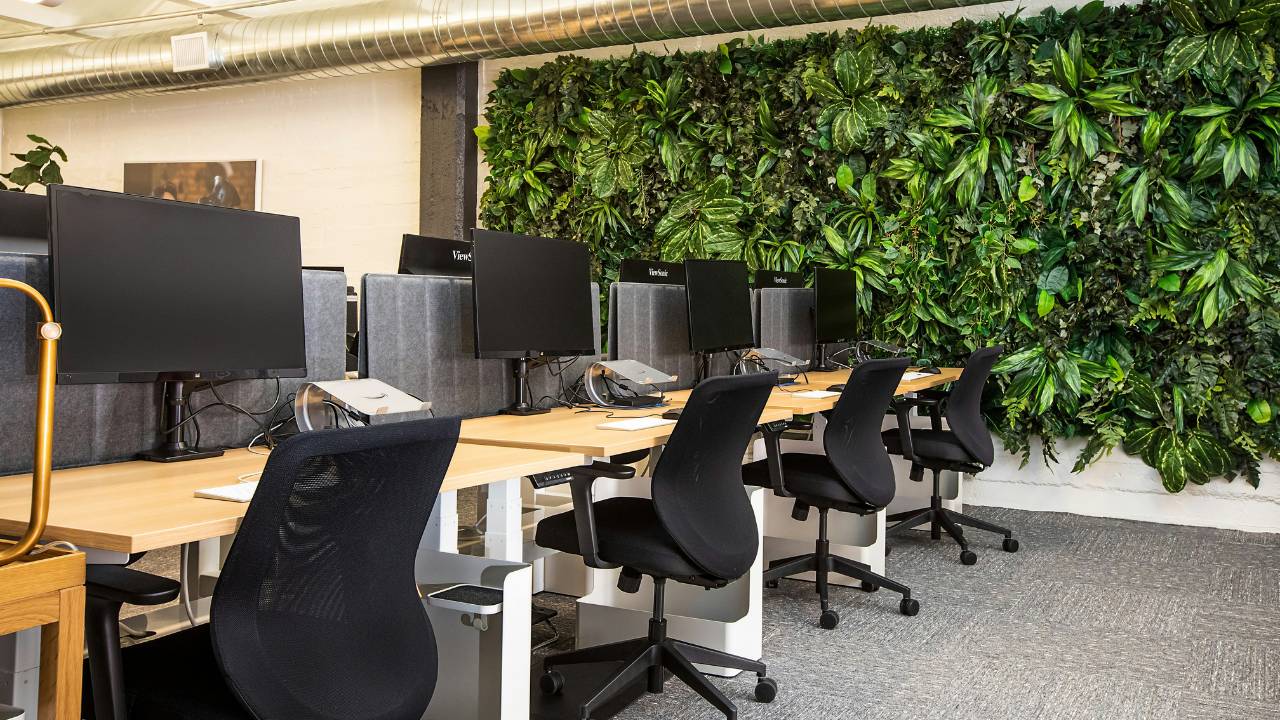
Creating a workplace that supports your well-being is vital in fostering a positive and productive environment. Thoughtful office design that incorporates elements of nature can be a game-changer in enhancing your daily work experience.
Boosting Productivity Through Nature
Introducing plants into your workplace isn’t just about aesthetics; it’s about bringing a slice of the outdoors inside, which has been shown to improve cognitive function. Imagine your desk flanked by lush greenery, purifying the air while offering a serene view. Studies suggest that natural elements in an office can increase productivity by up to 15%. Moreover, ensuring that natural light floods your workspace does more than just save on electricity; it can reduce eye strain, improve mood, and maintain circadian rhythm, all of which contribute to a more energetic and focused you.
Harnessing the power of natural aesthetics, i.e. biophilic design that emphasises the human-nature connection, trusts that your innate affinity for nature can be leveraged to create a working environment where you feel both peaceful and motivated. Consider adding natural wooden features or a small water fountain to introduce soothing auditory elements that mimic the tranquil sounds of a forest stream.
Enhancing Aesthetics and Functionality
The aesthetics of your office are as important as its functionality. Carefully selecting furniture and decor that resonate with natural elegance while serving a purpose can transform your workspace into a place where you want to spend time. Opt for ergonomic chairs and desks that allow you to adjust your working position effortlessly. Keeping in touch with nature’s palette through colour choices like earthy tones, sky blues, or leafy greens can make your office visually calming and enhance your company’s visual presence.
Your physical surroundings should provide an intuitive flow, where the design of the space promotes both individual focus and collaborative opportunities. Shared spaces infused with natural elements foster trust and openness among colleagues, creating a harmonious atmosphere conducive to teamwork and innovation.
In designing an office space that cares for your well-being, remember that every choice, from the infusion of natural light to the selection of plant life and the ergonomic quality of furniture, should serve to create a haven that nurtures both your peace of mind and your professional drive.
Economic and Environmental Stewardship
Creating a sustainable business environment intertwines economic growth with environmental conservation. Your commitment to stewardship supports both the natural world and economic prosperity.
Aligning with the Dasgupta Review
The Dasgupta Review underscores the critical role of biodiversity in maintaining the systems that drive your economy. By valuing ‘natural capital’—the stock of ecosystems that provide goods and services—you contribute to a robust economy grounded in environmental care. The review advocates for a transformative approach where you integrate nature into every aspect of your economic planning, ensuring the longevity of both the environment and your business.
Strengthening your supply chains with respect for biodiversity can lead to reduced costs and enhanced shareholder value in the long run. It starts with knowing the origins of your raw materials and ensuring that their extraction or production does not harm ecosystems.
Advancing Corporate Sustainability
Corporate sustainability is no longer just a trend; it’s a strategic component of long-term business success. The Capitals Coalition is a global collaboration that guides companies in accounting for natural and social capital, alongside traditional financial accounts, to achieve a more sustainable future.
As part of your corporate sustainability efforts, actively engaging in water stewardship is vital. This involves managing water usage within your operations and addressing water scarcity and pollution in your supply chains.
Furthermore, integrating environmental concerns into your business strategy isn’t just good for the planet—it also creates tangible benefits for your shareholders. By focusing on the long-term sustainability of resources, your company can see improved financial performance and risk management.
Fostering Sustainable Business and Supply Chains
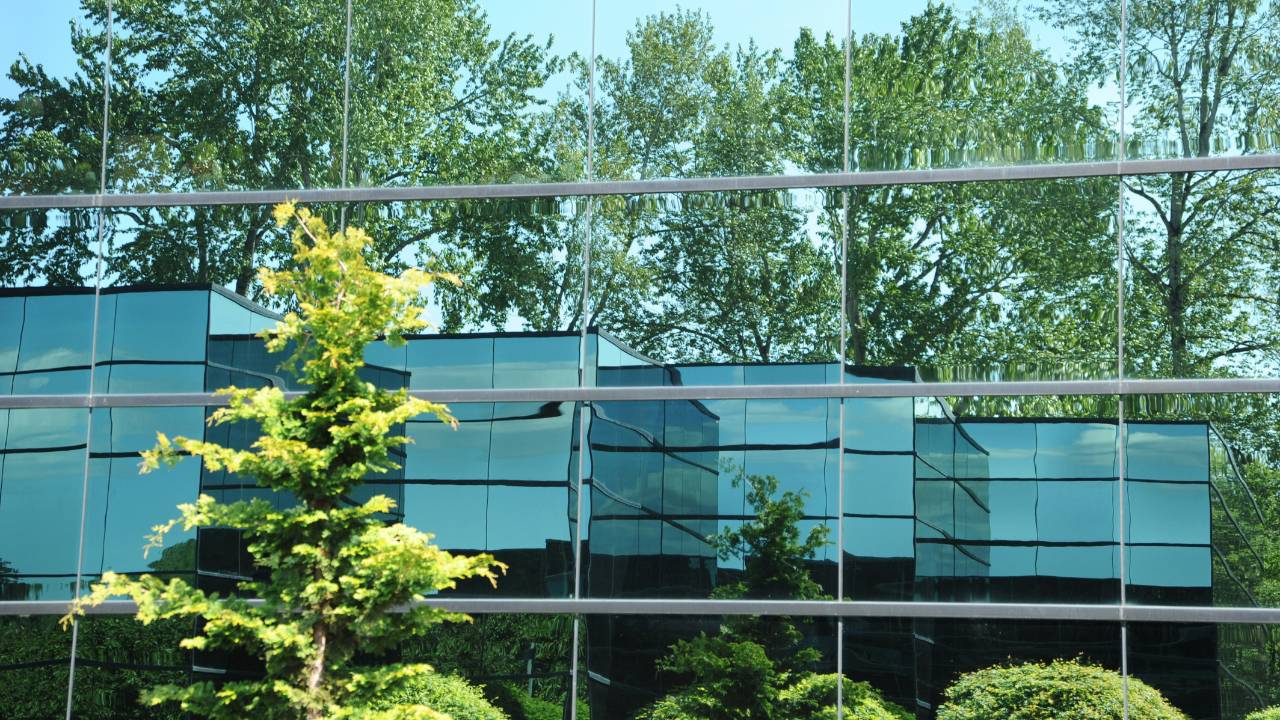
In your journey to foster sustainable business practices, it’s crucial to integrate environmental stewardship into your supply chain management and energy use. This section outlines actionable steps you can take to enhance performance, cultivate a responsible culture, and leverage renewable energy.
Optimising Value Chain
In optimising your value chain, you focus on transforming each step of your product’s journey, from raw materials to the end consumer. For instance, Unilever has restructured its procurement practices to be more cognisant of where and how ingredients, particularly those sourced from agriculture, are obtained. Your management can mirror this approach by creating partnerships with suppliers that prioritise sustainable methods, such as those that minimise the environmental impact of mining processes.
An effective approach is to review and modify performance measures within your supply chain. Take Walmart as an example; their commitment to track their suppliers’ sustainability performance has encouraged transparency and accountability. You should consider utilising management software that offers real-time data on supply chain activities, providing you with the insights needed to make informed decisions.
Promoting Renewable Energy Usage
Renewable energy is essential to your business’s long-term viability, particularly in the aftermath of the pandemic where energy stability is of high importance. Your operation can adopt a more sustainable energy culture by investing in energy sources such as solar, wind, or bioenergy. Integrating these technologies helps mitigate the environmental impact of your company’s operations.
For tangible results, study cases where large entities like Walmart have successfully harnessed renewable energy. This could range from solar panels on store roofs to purchasing energy from wind farms, which, despite upfront costs, can offer significant savings and performance improvements over time. By prioritising renewable energy, your business not only contributes to a greener culture but also benefits from potential government incentives and improved public perception.
Adapting to the New Normal
As you re-imagine your space in the business world, striking a balance between open collaboration areas and private spaces becomes essential. This balance supports your identity whilst ensuring seamless connectivity and leveraging technological advancements.
Embracing Privacy and Collaboration in Design
Your workspace design should foster collaboration without sacrificing privacy. Partitioned areas with sound-insulating materials allow for confidential discussions, and open-plan sections equipped with modern technology promote teamwork. Strategic placement of plants can enhance acoustics and infuse a calming aesthetic. Consider integrating smart glass that transitions from transparent to opaque, providing on-demand privacy while also contributing to a natural elegance.
Addressing Identity and Connectivity
Your establishment’s identity should shine through design elements that resonate with your ethos and brand. Furnishings that reflect your company’s character, coupled with state-of-the-art service interfaces, can establish a strong sense of place. High-speed internet, wireless charging stations, and interactive displays foster a high level of connectivity that meets the demands of a tech-savvy clientele or workforce. The goal is to create an environment where both your identity is clear and your connectivity is robust, allowing everyone to excel in their endeavours.
Looking Towards 2030
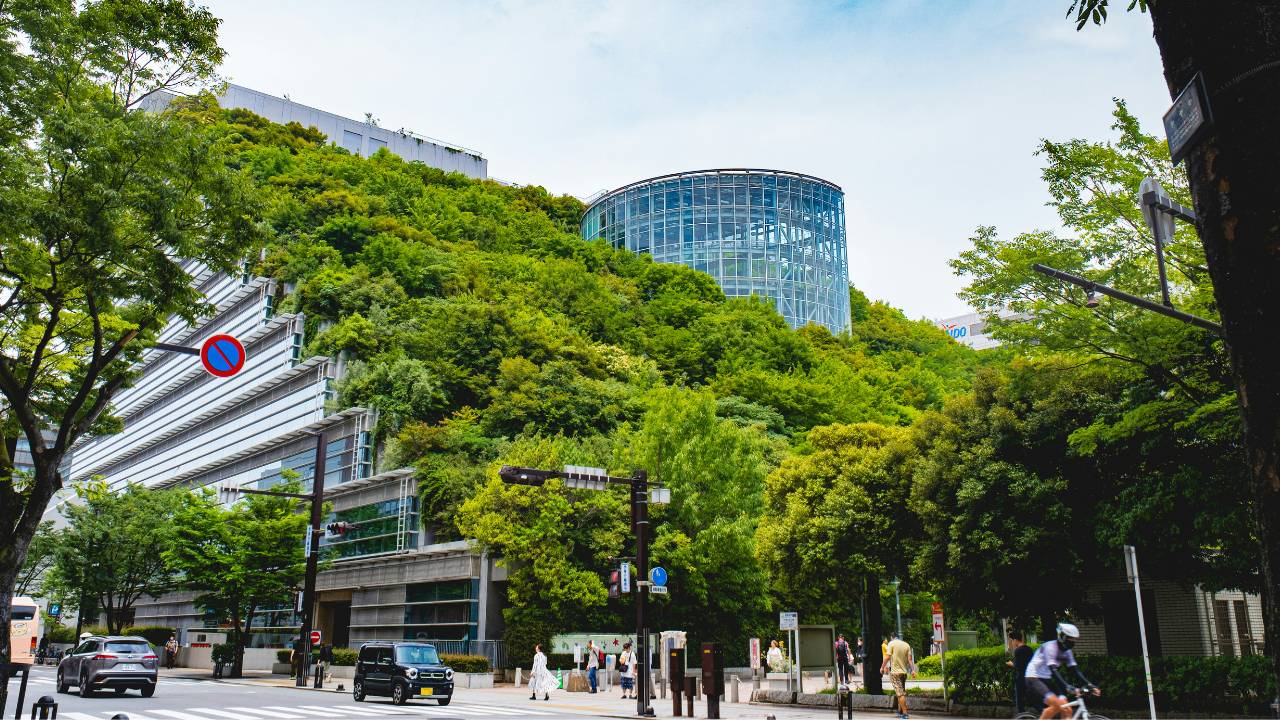
In the drive towards 2030, your strategy in management should embrace the advancements in technology which can synergise with natural elements to create resilient communities and future workplaces that cater to the well-being of all the individuals.
Setting the Scene for Future Workplaces
Imagine walking into your office in 2030; the air is fresh, greenery abounds, and sunlight filters through intelligent glass that adjusts its opacity based on the time of day. This isn’t just a dream—modern management techniques increasingly recognise the importance of incorporating natural elements into the workplace. This blending of nature and technology isn’t just good for your mood; it’s rooted in a strategy designed to boost productivity and innovation.
In these workspaces, management uses technology to monitor and adjust environmental conditions, ensuring you always work in optimal settings. Plants are selected through algorithms to improve air quality and reduce stress. Surfaces are coated with bacteria-resistant materials derived from natural sources, and lighting systems mimic natural rhythms to support your circadian cycle.
Technology plays a pivotal role; from ergonomic furniture that adjusts to your body with the touch of an app, to meeting rooms that use biophilic design principles, creating spaces where ideas flourish. Your workplace becomes a sanctuary, harmonising with your natural needs, and harnessing the output of high-tech solutions to promote a healthy work atmosphere.
As an individual in this system, you take ownership of your environment with wearable devices that interface seamlessly with your surroundings, offering feedback to management that further refines the workspace. The organisation benefits as wellness statistics improve, attrition rates fall, and employee engagement hits new heights.
By 2030, integrating these elements becomes the standard, shaping a world where business environments are tailored to human performance and ecological sustainability, showcasing a forward-thinking approach where your well-being and the planet’s health are at the forefront of company culture.
Conclusion
Embracing natural elegance allows you to create an inviting atmosphere for both staff and clients. Your office becomes more than just a place of work — it transforms into an environment where people can thrive. You’ve taken steps to boost morale and foster a sense of peace, which in turn can positively affect customer interactions.
Remember, small changes can have a significant impact. Start with a few plants or maximise natural lighting to see immediate changes in the ambience of your space. Your journey towards a harmonious business environment is one that benefits everyone who steps into your world.
